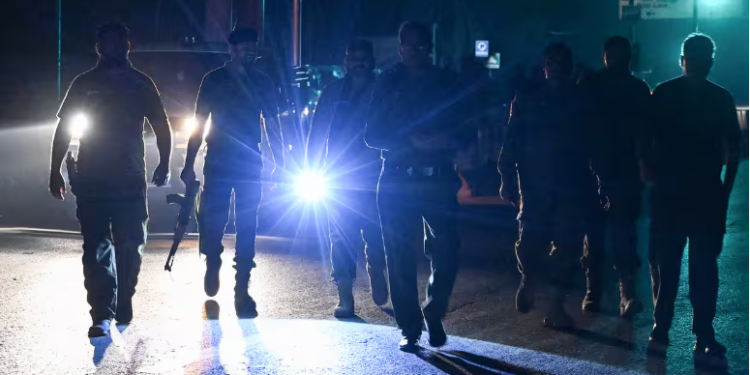India and Pakistan have traded accusations of launching missile strikes on each other’s key military installations, marking the most serious escalation in their long-standing hostilities in years.
On Saturday, India alleged that Pakistan had carried out coordinated strikes on multiple airbases and military headquarters across northern India using drones, long-range missiles, and fighter jets. These allegations followed Pakistan’s earlier claim that India had launched six surface-to-air missiles targeting three of its major military bases early that same morning.
Soon after, Pakistan confirmed it had launched a retaliatory offensive under “Operation Bunyan Ul Marsoos,” a Quranic phrase meaning “wall of lead.”
According to Indian officials, Pakistan initiated the strikes. Indian army spokesperson Col. Sofiya Qureshi stated at a press conference that Pakistan hit 26 locations, including the Pathankot airfield in Punjab, Srinagar airport, and the Udhampur air force base in Indian-administered Kashmir. She condemned the attacks on civilian infrastructure as “deplorable and cowardly.”
Qureshi noted that Indian forces successfully neutralized the threats, though four airbases suffered some damage. Foreign Secretary Vikram Misri dismissed Pakistani media reports about destroyed airbases and weapons systems as “full of lies, misinformation, and propaganda.”
India claimed its attack on Pakistani military sites was a response to earlier missile launches that hit airbases in Punjab at around 2 a.m. “In a swift and calibrated response, Indian Armed Forces carried out precision attacks only on identified military targets,” Qureshi said.
In the hours following the strikes, Pakistan’s Deputy Prime Minister and Foreign Minister Ishaq Dar appeared on local media, saying if India chose to stop the attacks, Pakistan would also consider halting its retaliation. India echoed a similar stance, saying it remained committed to “non-escalation” if Pakistan reciprocated.
Despite these statements, Indian officials reported continued Pakistani troop movements toward forward positions, calling it a sign of “offensive intent.”
Pakistan presented a different account. Military spokesperson Gen. Ahmed Sharif Chaudhry, speaking on state TV around 3:30 a.m., claimed India struck first, launching surface-to-air missiles from fighter jets at Nur Khan, Murid, and Shorkot bases. He added that most missiles were intercepted by Pakistan’s air defenses.
The Nur Khan airbase, located near Rawalpindi and just six miles from Islamabad, sits in a densely populated area. Videos on social media showed flames and smoke rising, with panicked residents fleeing their homes. “There was a loud explosion which woke everyone up. It was so scary; everyone is still in a panic,” said one resident.
Chaudhry labeled the Indian strikes “blatant acts of aggression” and part of a larger agenda to destabilize the region. An hour later, Pakistan officially began its counterstrike against Indian military sites.
Speaking to Geo News after the counteroffensive began, Dar said Pakistan was left with no choice. “There was no other option because India showed no sincerity in response to the diplomatic efforts made by friendly countries. We acted only after India continued firing drones and missiles.”
The situation intensified after an Indian missiles strike on Wednesday killed 31 people at nine locations in Pakistan. India said the move was retaliation for an attack in Indian-administered Kashmir late last month, where militants killed 25 Hindu tourists and a guide—an attack India blamed on Pakistani-backed extremists.
Tensions worsened as India accused Pakistan of back-to-back drone assaults. Indian officials claimed to have intercepted over 400 drones targeting military bases, cities, and religious sites on Thursday. In response, India launched four drone strikes aimed at Pakistani defense infrastructure.
The fallout from Pakistan’s retaliatory strikes has kept both countries on high alert. Heavy shelling and gunfire erupted across the Line of Control, the heavily militarized border in Kashmir, leading to civilian casualties.
Indian cities and districts in Punjab, Haryana, and Indian-administered Kashmir, were placed on red alert. Authorities advised residents to stay indoors and enforced blackout protocols.
India responded by rapidly mobilizing troops along the border and activating its reserve Territorial Army to reinforce its defenses.
Meanwhile, the U.S. State Department confirmed that Secretary of State Marco Rubio spoke with Pakistan’s army chief, Gen. Asim Munir, and India’s foreign minister, Subrahmanyam Jaishankar, early Saturday. Rubio urged both sides to de-escalate tensions and offered U.S. assistance in facilitating diplomatic dialogue.









